How does the IoT monitor traffic? The Internet of Things (IoT) is transforming how municipalities and agencies in the
transportation industry monitor traffic on roadways. By deploying connected sensors, cameras, and controllers, cities can collect real-time data on vehicles and road conditions, enabling data-driven traffic management, as well as improvements in emergency vehicle routing and the efficiency of public transportation systems.
In this blog, we explore 12 real-world traffic monitoring and smart city technology examples, demonstrating how traffic monitoring devices and systems are making streets safer and more efficient — from smart traffic lights that cut congestion to traffic sensors on roads that enable proactive maintenance.
Why IoT Is a Game Changer for Smart City Traffic Monitoring
While many of the smart city technology advances that make our lives easier are behind the scenes, and are still in the early stages, these advances are addressing many pain points.
- Have you ever been on your commute and wondered why a traffic light always seems to last longer or shorter than you think it should?
- Have you ever been anxious not knowing when the next train or bus is going to come since there were no real-time updates?
- Have you been thankful for public safety resources being available when passed by first responders to soon be snarled in traffic?
- Have you ever wondered what the road conditions are like as you set out on a road trip in inclement weather?
I have. I have also personally written to my local transportation department to understand and possibly help resolve some issues. As IoT is deployed across the transportation infrastructure our commutes become faster and safer.

How the IoT Monitors Traffic in Smart Cities
Smart cities today are leveraging technology as part of their infrastructure initiatives. Integrating devices and sensors to let the IoT monitor traffic across the municipality and create an interconnected traffic monitoring system improves mobility and safety. Traffic sensors on roads gather live data on vehicle counts, speeds, and congestion hot spots. This information feeds into central platforms that apply analytics and AI to optimize traffic flow in real time. For example, a city might use a traffic light monitoring system to adjust signal timing based on live conditions.
Today, cellular technology is changing the game. Advanced cellular router solutions bring together high-speed networks, security, redundancy, and robust resilience in challenging environments to support a range of mission critical transportation use cases, including traffic management, fleet monitoring and predictive maintenance. By letting the IoT monitor traffic in cities turns static transportation networks into dynamic systems that react to demand and keep urban traffic moving smoothly.
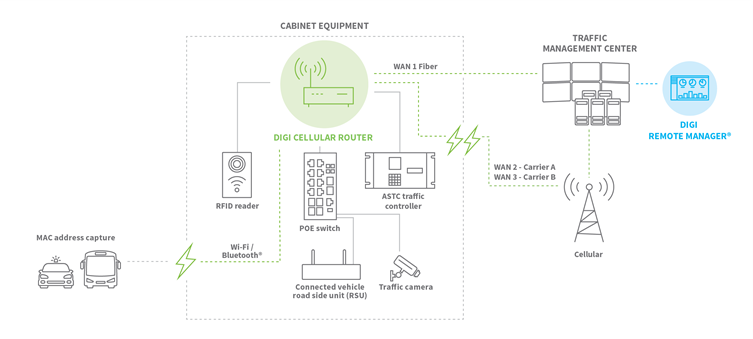
12 Real-World Examples of How the IoT Monitors Traffic
IoT-based traffic management isn’t theoretical — it’s happening now. Below we highlight a dozen implementations where IoT technologies monitor and improve vehicle traffic. These examples span real-time congestion monitoring, adaptive traffic signals, emergency vehicle priority, smart parking, road safety, predictive analytics, and more. Each example features a city that has deployed an innovative IoT solution as part of a smart traffic management system IoT initiative. From smart traffic lights in Pittsburgh to AI traffic analytics in Singapore, these applications help the IoT monitor traffic and show how connected tech is reducing delays, improving safety, and optimizing urban transportation:
Real-Time Traffic Monitoring
Real-time traffic monitoring devices use IoT sensors and cameras to gather live traffic data for immediate response.
How it works:
- Instead of periodic manual counts, these systems provide up-to-the-second insights into congestion and incidents
- Traffic control centers leverage this data to adjust signal plans or dispatch responders instantaneously, helping prevent minor slowdowns from becoming major jams
- The result is more proactive traffic management and smoother flow through the city
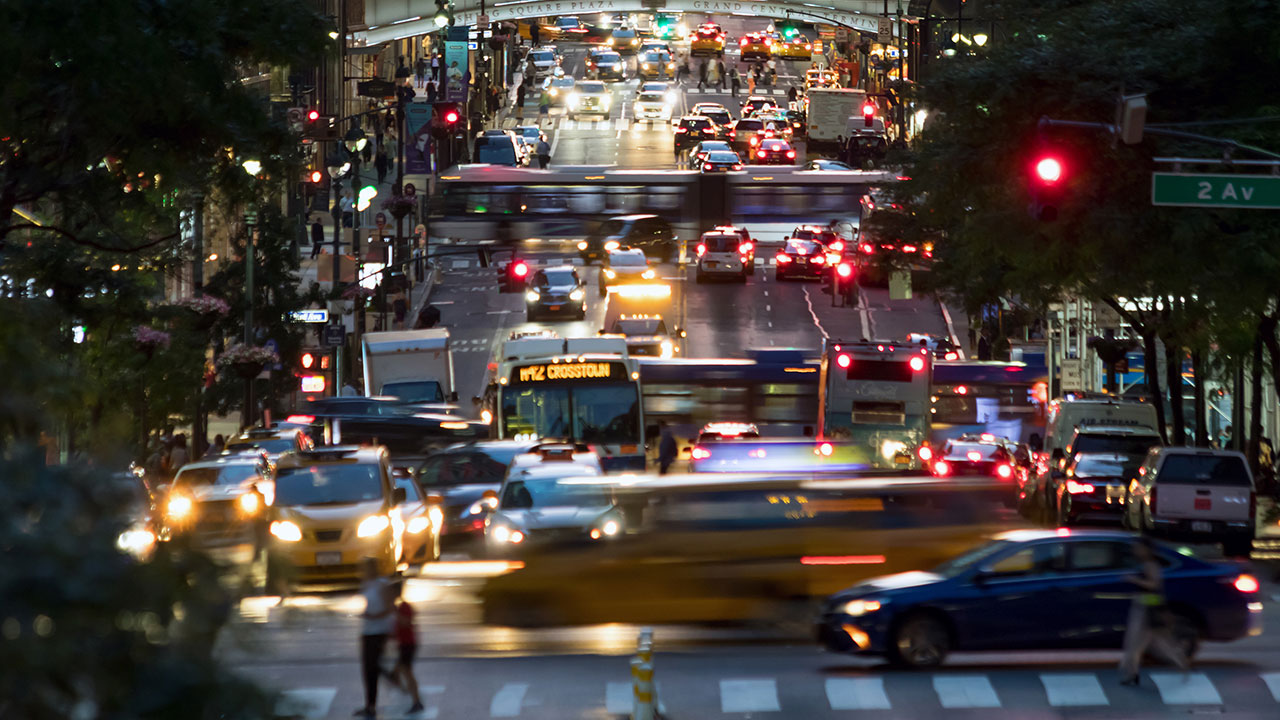 New York, New York implemented an IoT-based real-time traffic monitoring solution by deploying Digi cellular routers and integrated device management software to 14,000 intersections across all five boroughs.
New York, New York implemented an IoT-based real-time traffic monitoring solution by deploying Digi cellular routers and integrated device management software to 14,000 intersections across all five boroughs.
The system provides a citywide communication backbone to all intelligent transportation system (ITS) devices, including traffic cameras, VMS, vehicle detection devices and intersections. This massive upgrade significantly improved the reliability of the city’s traffic management system and enabled rapid in-depth insights on congestion across the city as well as improved automation.
Outcomes:
- Improved system reliability to 99%
- Integration of the FirstNet® first responder network for improved emergency response
- Implementation of advanced security, including a cryptographic co-processor to protect particularly sensitive data such as stored passwords and encryption keys
Smart Traffic Lights
 Smart traffic lights are IoT-connected signals that adapt to real-time conditions.
Smart traffic lights are IoT-connected signals that adapt to real-time conditions.
How it works:
- Sensors or cameras detect vehicles and congestion at intersections, allowing the signal controller to adjust light timing dynamically. For example, a smart traffic light might extend a green phase if it senses a queue of cars.
- By responding to actual traffic demand, smart traffic signals reduce unnecessary red-light waits and optimize traffic flow through intersections.
Pittsburgh, USA deployed an AI-driven smart traffic management system citywide. Traffic sensors on roads measure traffic flow and feed data to a central AI that optimizes signal timings in real time. This system dramatically cut intersection delays and even lowered vehicle emissions.
Outcomes:
- Vehicle wait times reduced by ~40% at intersections
- Citywide traffic emissions reduced by 21% from less idling
Dynamic Emergency Response
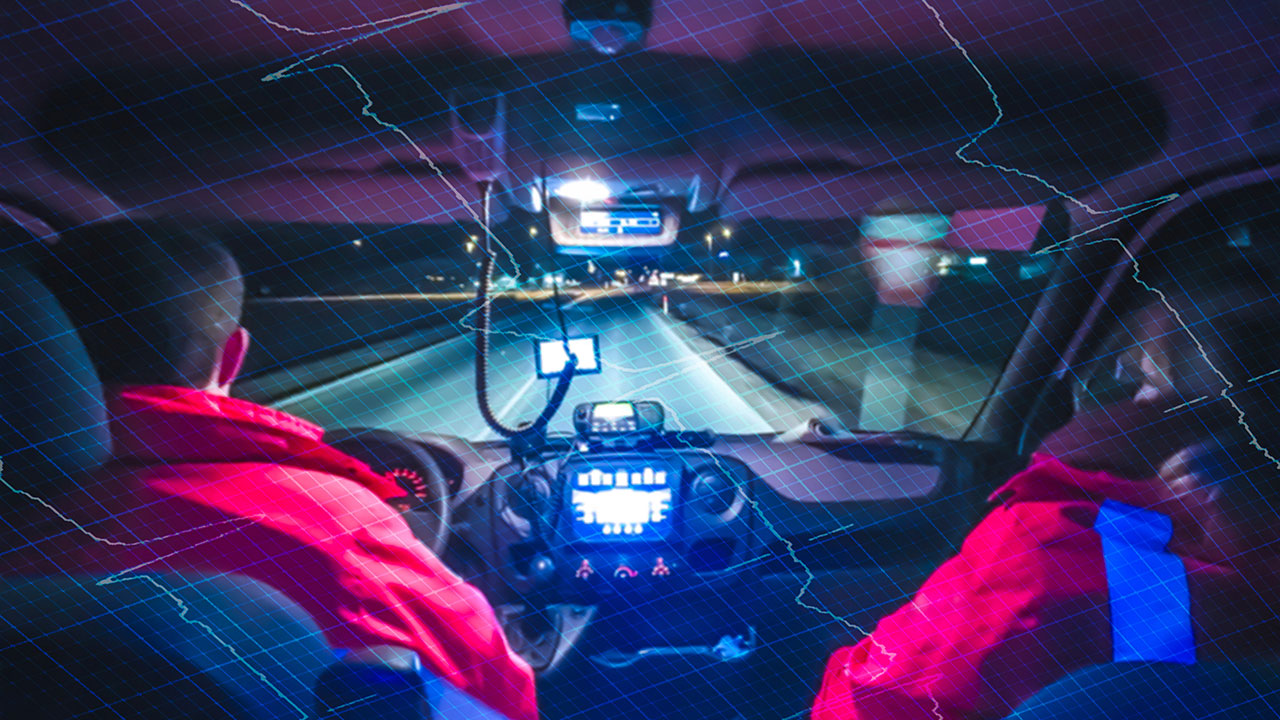
IoT helps emergency vehicles reach their destinations faster by giving them priority through traffic.
How it works:
- Smart traffic management systems can turn lights green for first responders as they approach, clearing a path through intersections.
- By communicating with signals via GPS and wireless networks, emergency response times drop significantly, improving public safety when every second counts.
Stockholm, Sweden uses an IoT-based traffic priority system with smart traffic lights for emergency services. Emergency vehicles transmit their location to the traffic control center, which automatically clears their route — changing traffic lights to green and holding cross-traffic.
Outcomes:
Smart Parking Systems
 IoT-enabled smart parking guides drivers to available spots and reduces the time spent searching for parking.
IoT-enabled smart parking guides drivers to available spots and reduces the time spent searching for parking.
How it works:
- Wireless sensors embedded in parking spaces or in camera systems detect open spots in real time.
- This data is relayed to drivers via mobile apps or digital signs, preventing curbside congestion.
- Many systems also enable dynamic pricing of parking fees to ensure some spaces stay open.
- By reducing cruising for parking, smart parking systems reduce traffic congestion and vehicle emissions in busy areas.
San Francisco pioneered a smart parking program (SFpark) with parking space sensors. These IoT sensors report open spots via a city app and adjust meter prices based on demand, so drivers find parking faster and spend less time circling — cutting congestion and emissions.
Outcomes:
- Reduced parking search time (less circling)
- Lower vehicle emissions and fuel waste from less idling
Road Safety Monitoring
IoT technologies continuously monitor roads for unsafe conditions and traffic violations.
How it works:
- Smart cameras and radar sensors can automatically detect speeding, red-light running, or wrong-way drivers and instantly alert authorities or trigger automated responses.
- Some systems integrate weather sensors to monitor road conditions (e.g., ice or fog) and adjust speed limits or warning signs accordingly.
- This 24/7 automated surveillance helps prevent accidents and enforce traffic laws more consistently than human patrols alone.

London is piloting AI-enabled traffic cameras to enhance road safety. Letting the IoT monitor traffic, these connected cameras identify vehicles and detect violations (e.g., speeding or illegal phone use) with high accuracy, automatically enabling enforcement.
Outcomes:
- ~98% accurate automated detection of traffic violations
- 24/7 monitoring improves enforcement versus limited human patrol hours
Predictive Traffic Analytics
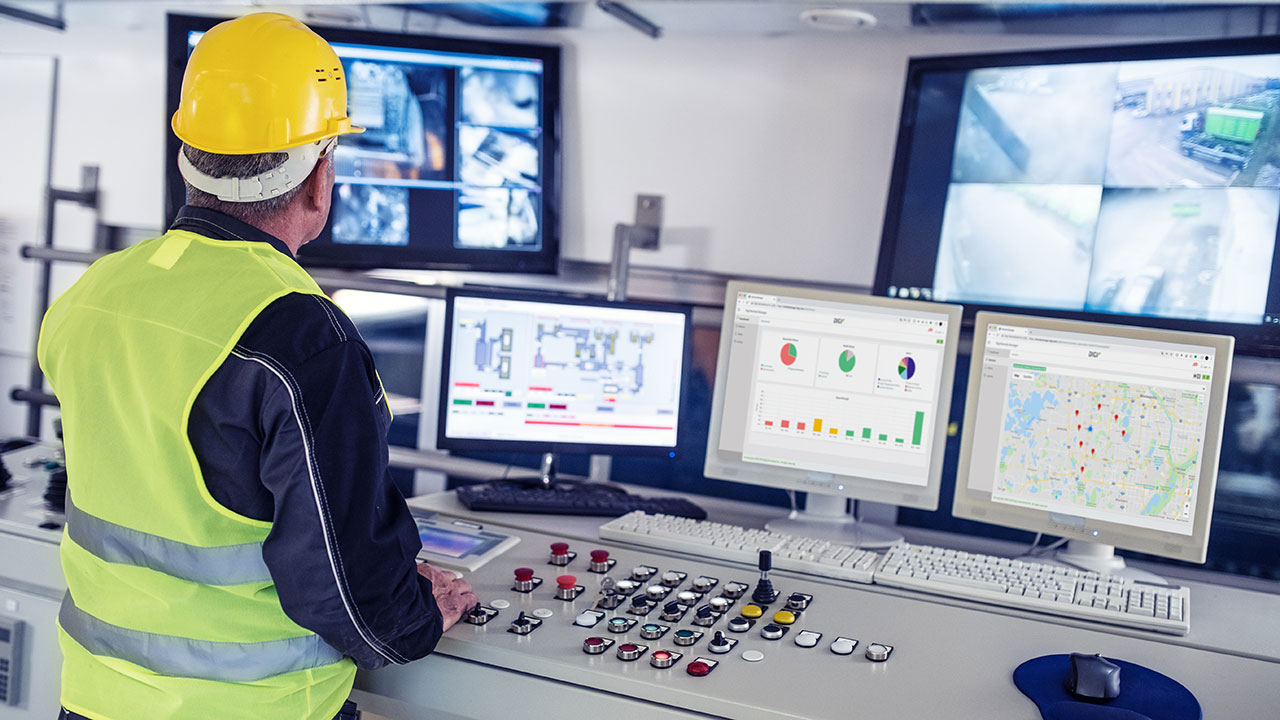 Combining IoT data with predictive analytics helps cities anticipate and prevent congestion before it occurs.
Combining IoT data with predictive analytics helps cities anticipate and prevent congestion before it occurs.
How it works:
- By analyzing real-time sensor inputs along with historical traffic patterns, AI models can forecast where and when traffic will build up.
- Traffic managers can then proactively adjust signals, update digital signs, or send alerts to drivers to divert routes.
- In some cases, smart traffic predictive systems tie into dynamic road pricing — for example, raising tolls when congestion is high to discourage excess traffic.
- This forward-looking approach turns IoT-collected data into actionable strategies for maintaining smoother traffic flow.
Singapore’s Land Transport Authority uses IoT-driven predictive analytics to manage traffic. The city’s system ingests data from traffic sensors on roads, GPS devices on vehicles, and surveillance cameras to forecast congestion up to an hour in advance. This allows authorities to let the IoT monitor traffic and adjust controls preemptively and even vary electronic road toll rates based on predictions, preventing gridlock.
Outcomes:
- Traffic volume forecasts achieved more than 90% accuracy in trials
- Dynamic congestion pricing activated by predictions helps avert traffic jams
Dynamic Lane Management
The IoT enables cities to reconfigure road lanes in real time to match traffic demand.
How it works:
- Using digital lane signs and sensors, transportation agencies can open or close lanes or reverse their direction during peak periods.
- If sensors detect heavy congestion in one direction, the system can allocate more lanes to that flow.
- Dynamic lane management maximizes road capacity when and where it’s needed, reducing rush-hour bottlenecks.
Los Angeles has adopted dynamic lane management on some of its busiest roads. The city’s Automated Traffic Surveillance and Control (ATSAC) is a traffic monitoring system that uses thousands of sensors and IoT-connected signals to watch vehicles and adjust patterns in real time. In some corridors, Los Angeles operates reversible lanes controlled by overhead IoT signs to add capacity during rush hour. These measures have improved commute times and reduced stop-and-go traffic in the city.
Outcomes:
- Travel times reduced by up to 16% on routes with adaptive signals
- Vehicle emissions down ~14% from smoother traffic flow
Predictive Maintenance of Infrastructure
IoT isn’t only for managing traffic flow — it also helps maintain the infrastructure that vehicles travel on.
How it works:
- Smart cities embed traffic sensors on roads, bridges, and tunnels to continuously monitor structural conditions.
- These IoT sensors can detect vibrations, strain, or cracks that indicate wear and tear or potential failures.
- City engineers receive alerts about any abnormal readings, allowing them to fix issues proactively.
- By performing maintenance or repairs before a pothole forms or a bridge joint fails, cities can prevent disruptive road closures and improve safety. IoT-based predictive maintenance extends the lifespan of infrastructure.
Amsterdam uses IoT sensors to monitor the health of its infrastructure, including bridges. Notably, the city’s 3D-printed steel footbridge is outfitted with a network of sensors that track vibrations and strain as pedestrians cross. The data feeds into a digital twin (virtual model of the bridge) for analysis. This approach to let the IoT monitor traffic and wear-and-tear provides real-time structural health checks and alerts engineers to any issues so they can conduct maintenance before problems escalate.
Outcomes:
- Continuous structural monitoring provides early warning of cracks or stress
- Data-driven maintenance scheduling prevents unexpected bridge or road closures
Fleet Management and Predictive Vehicle Maintenance
Municipal fleets and public transit agencies use the IoT to optimize vehicle usage and maintenance.
How it works:
- Buses, garbage trucks, and other city vehicles are equipped with telematics devices that report their location and engine health.
- Fleet managers use this data to schedule proactive maintenance and optimize routes.
- By analyzing diagnostics and wear indicators, mechanics can service vehicles before breakdowns occur. This approach prevents vehicles from stalling on the road and disrupting traffic, and it keeps buses and trains running on schedule for riders.
Chicago has embraced IoT-based fleet management for its public transit and city service vehicles. The Chicago Transit Authority uses IoT sensors on buses to track passenger loads and vehicle performance in real time, and city trucks carry telematics units that flag engine issues. This data allows Chicago to perform predictive maintenance — fixing vehicles before they fail — to improve reliability and prevent on-road breakdowns.
Outcomes:
- Predictive maintenance alerts prevent vehicle breakdowns during operation
- Real-time fleet data leads to more efficient routes and better on-time performance for transit
Environmental Monitoring for Safer Roads
Weather and environmental conditions have a major impact on road safety, and IoT traffic sensors on roads can help traffic managers respond to those conditions in real time.
How it works:
- Cities use IoT weather stations and road-surface sensors to detect rain, ice, fog, or high winds on roadways.
- The sensors detect dangerous conditions that trigger warnings
- Variable message signs can automatically alert drivers of the conditions
- Traffic controls can automatically reduce speed limits
By incorporating environmental data, IoT-enhanced smart traffic management makes roads safer and more resilient to weather and other natural factors.
Copenhagen integrates environmental sensing into its smart traffic management network. The city has deployed sensor boxes (CPH:SENSE) along streets that measure weather conditions (e.g., temperature, humidity, and light levels) as well as noise and air pollution, in addition to tracking traffic counts.
This rich IoT data allows Copenhagen’s traffic control center to adjust operations based on conditions. For example, if sensors detect icy roads, the system automatically slows down coordinated traffic signal timings to encourage safer driving speeds.
Outcomes:
- Traffic signals dynamically adjust for hazardous weather (e.g., slower green wave in ice)
- Tracking traffic provides rapid, actionable insights to operators in the traffic control center
Public Transportation Innovation
The IoT helps integrate public transportation more tightly into the overall traffic network.
How it works:
Connected transit vehicles (buses, trams) can communicate with smart traffic signals to request priority, shortening travel times.
- Real-time GPS tracking of buses and trains enables transit agencies to provide accurate arrival predictions to riders and to adjust service during disruptions.
- IoT-based ticketing and passenger counters give transit planners better data on usage patterns.
- By improving transit reliability and efficiency, these smart transportation solutions encourage higher ridership.
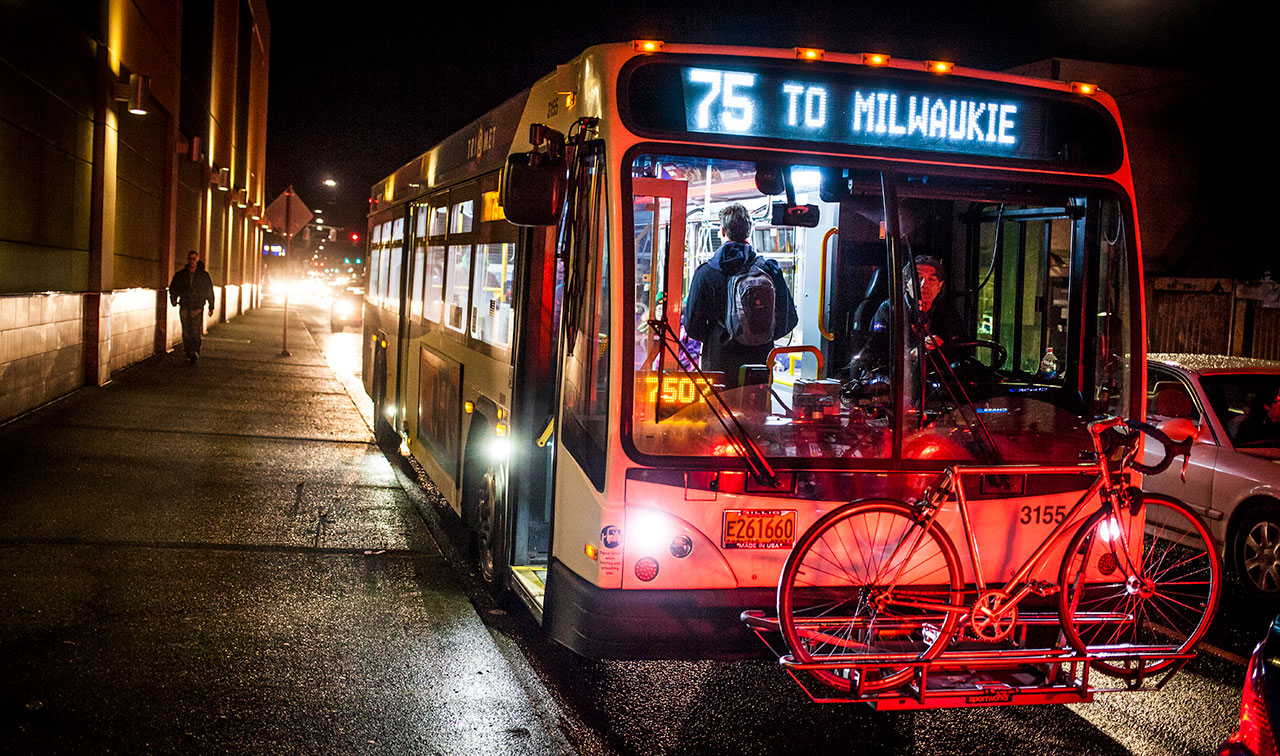
Portland, Oregon’s TriMet agency implemented innovations to boost the efficiency of its bus network. Buses across the Portland metro area are equipped with cellular routers that communicate with smart traffic lights, so signals automatically give public transport priority through intersections, improving the rider experience and reducing emissions. The modernization upgraded the system’s technology to integrate real-time computer-aided dispatch, automated vehicle location, and electronic fare connection.
Outcomes:
- Bus travel times reduced with traffic signal priority (TSP) for transit
- TSP can reduce emissions by 14% in a major city, preventing hundreds of thousands of tons of CO2 emissions
Toll and Ticketing Automation
The IoT is streamlining toll collection and traffic-law enforcement through automation.
How it works:
- Modern electronic tolling systems use RFID tags or automatic license plate recognition so vehicles can be identified at highway speeds without stopping — eliminating congestion at toll plazas.
- Similarly, cities are deploying IoT-enabled cameras and speed sensors that automatically detect violations (e.g., speeding or red-light running) and issue tickets digitally, without needing an officer on site.
- Automated toll and ticketing systems improve traffic flow (by removing bottlenecks and roadside stops) and enhance safety through consistent enforcement.
Dubai has implemented a fully IoT-enabled tolling and enforcement system. The city’s Salik electronic toll system uses RFID tags on vehicles and overhead readers to automatically charge cars as they pass under toll gates, with no need to slow down. Dubai has also deployed AI-powered traffic cameras and radar that operate 24/7 to catch speeding, tailgating, or seatbelt violations, automatically issuing fines to violators.
Outcomes:
- Free-flow automated tolling eliminated congestion at former toll booths
- AI-based cameras catch violations around the clock, improving law compliance and road safety
Internet of Things for Smart Traffic Management Systems
For transportation engineers and enterprise stakeholders, these examples demonstrate that IoT is fundamental to smart traffic management.
How it works:
- By connecting devices and applying analytics and letting the IoT monitor traffic, these solutions help cities reduce congestion, enhance safety, and optimize traffic operations at scale.
- A traffic monitoring network acts as the eyes and ears of a city’s traffic system, providing continuous feedback and control capabilities.
IoT Traffic Management Solutions
An IoT traffic monitoring system includes connected sensors, cameras and signal controllers plus software for real-time control. These tools give cities granular visibility and allow instant adjustments to traffic signals or other controls via automated systems.
Smart Transportation Solutions
Beyond intersections, IoT powers smart traffic management across all travel modes. Transit agencies use IoT for tracking buses and predicting arrivals, and ride-sharing services depend on IoT (GPS and apps) to coordinate with city traffic. Integrating these IoT data streams helps create a more efficient, multimodal network.
Smart City Solutions
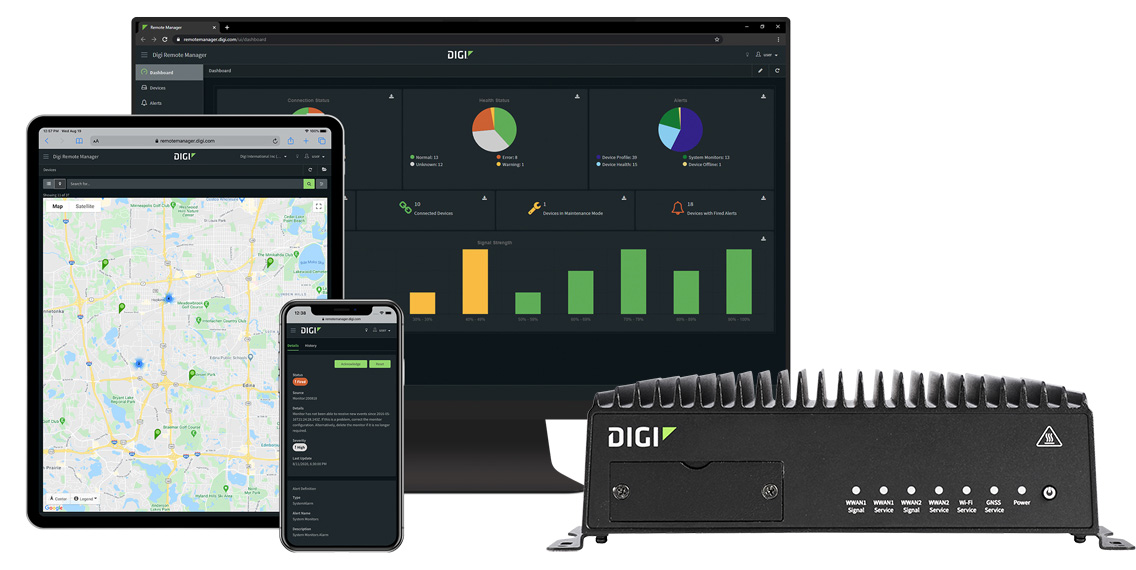
Traffic IoT is part of broader smart city solutions — the same connected infrastructure also supports environmental monitoring, emergency response and more. Integrating traffic data with other city systems enables better resource management, faster responses, and a more sustainable, livable city.
Digi offers a full solution suite for traffic management, including Digi TX54 5G transportation routers designed for continuous connectivity, field longevity and edge computing. Digi TX54 provides secure routing and gateway functionality across wired and wireless communication networks with the latest-generation technology — easy to deploy and centrally managed via Digi Remote Manager® (Digi RM), which is included in your Digi 360 solution. Digi also offers an industrial line of IX routers for traffic monitoring and infrastructure management in fixed locations.
IoT Traffic Monitoring FAQ
What is IoT traffic monitoring?
IoT traffic monitoring refers to the use of Internet of Things (IoT) devices and sensors to collect, analyze, and monitor traffic-related data. These devices are placed on roads, intersections, and vehicles to gather real-time information such as vehicle counts, speed, traffic flow, and congestion levels. The collected data is then transmitted to a central system for analysis and reporting, helping improve traffic management, reduce congestion, and enhance road safety.
How does IoT traffic monitoring improve traffic management?
IoT traffic monitoring enhances traffic management by providing real-time insights into traffic conditions. By using sensors and cameras, it can detect congestion, monitor vehicle speed, and track the flow of traffic. This information enables better traffic signal control, more efficient routing, and timely responses to accidents or road conditions. With predictive analytics, traffic authorities can forecast traffic patterns and optimize infrastructure accordingly, leading to reduced travel time and less congestion.
What types of IoT devices are used for traffic monitoring?
Various IoT devices are used for traffic monitoring, including:
- Industrial cellular routers: These devices provide the communication backbone for IoT traffic monitoring, enabling secure data capture at intersections across the municipality, which is then routed to the traffic management center. A remote management platform like Digi Remote Manager provides the visual interface and device monitoring and management functionality required for actionable insights, security alerts, reporting and visualization.
- Smart cameras and CCTV: Used for monitoring traffic flow and detecting incidents in real-time.
- Radar and lidar sensors: These sensors can measure vehicle speed, detect traffic density, and identify road hazards.
- Inductive loop sensors: Installed under the road surface, these sensors detect the presence of vehicles passing over them.
- GPS devices: Installed in vehicles, these devices provide data on vehicle location and movement.
- Weather and environmental sensors: These sensors monitor road conditions, such as temperature, rain, or fog, which could affect traffic safety
What are the key benefits of IoT in traffic monitoring systems?
The key benefits of IoT in traffic monitoring include:
- Improved traffic flow: Real-time data helps optimize signal timings and reroute traffic to avoid congestion.
- Accident detection: IoT devices can instantly report accidents or breakdowns, reducing response time.
- Better infrastructure planning: IoT data provides insights that inform infrastructure development and upgrades.
- Reduced emissions: By optimizing traffic flow, IoT traffic systems can help reduce idle times, lowering carbon emissions from vehicles.
- Enhanced public safety: Real-time monitoring allows for rapid response to hazardous driving conditions and incidents.
Are IoT traffic monitoring systems secure from cyber threats?
IoT traffic monitoring systems can be vulnerable to cyber threats if not properly secured. Since these systems transmit real-time data over the Internet, they may be susceptible to hacking, data breaches, and malware. To ensure security, traffic monitoring systems need to implement strong encryption, secure communication protocols, regular software updates, and multi-layered security measures. Additionally, constant monitoring and threat detection systems should be in place to identify and mitigate potential security risks in real-time.
It's therefore critical to work with a solution provider like Digi that provides integrated security and remote monitoring, management and alerts to support strong cybersecurity, as well as the ability to update deployed devices with firmware patches as new cyber threats emerge.
Next Steps